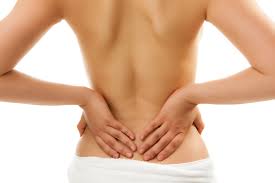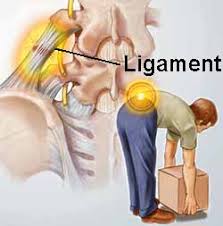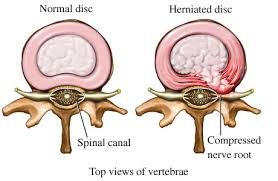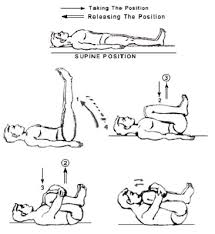This is my 5th blog on back pain. In this blog you will see some bedding tricks for reducing back pain.






 Pain
Pain
What is back pain?
Back pain is a common complaint. Most people in the United States will experience low back pain at least once during their lives. Back pain is one of the most common reasons people go to the doctor or miss work.
On the bright side, you can take measures to prevent or lessen most back pain episodes. If prevention fails, simple home treatment and proper body mechanics will often heal your back within a few weeks and keep it functional for the long haul. Surgery is rarely needed to treat back pain.
Symptoms
Symptoms of back pain may include:
•Muscle ache
•Shooting or stabbing pain
•Pain that radiates down your leg
•Limited flexibility or range of motion of your back
•Inability to stand straight
Back pain that lasts from a few days to a few weeks is considered acute. Pain that lasts for three months or longer is considered chronic.
When to see a doctor
Most back pain gradually improves with home treatment and self-care. Although the pain may take several weeks to disappear completely, you should notice some improvement within the first 72 hours of self-care. If not, see your doctor.
In rare cases, back pain can signal a serious medical problem. Contact a doctor if your back pain:
•Is constant or intense, especially at night or when you lie down
•Spreads down one or both legs, especially if the pain extends below your knee
•Causes weakness, numbness or tingling in one or both legs
•Causes new bowel or bladder problems
•Is associated with pain or throbbing (pulsation) in your abdomen, or fever
•Follows a fall, blow to your back or other injury
•Is accompanied by unexplained weight loss
Also, see your doctor if you start having back pain for the first time after age 50, or if you have a history of cancer, osteoporosis, steroid use, or drug or alcohol abuse.
Causes
Your back is an intricate structure composed of bones, muscles, ligaments, tendons and disks. Disks are the cartilage-like pads that act as cushions between the segments of your spine. Back pain can arise from problems with any of these component parts. In some people, no specific cause for their back pain can be found.
Strains
Back pain most often occurs:
•From strained muscles and ligaments
•From improper or heavy lifting
•After a sudden awkward movement
Sometimes a muscle spasm can cause or be associated with back pain.
Structural problems
In some cases, back pain may be caused by structural problems, such as:
•Bulging or ruptured disks. Disks act as cushions between the vertebrae in your spine. Sometimes, the soft material inside a disk may bulge out of place or rupture and press on a nerve. But even so, many people who have bulging or herniated disks experience no pain from the condition.
•Sciatica. If a bulging or herniated disk presses on the main nerve that travels down your leg, it can cause sciatica — sharp, shooting pain through the buttock and back of the leg.
•Arthritis. The joints most commonly affected by osteoarthritis are the hips, hands, knees and lower back. In some cases arthritis in the spine can lead to a narrowing of the space around the spinal cord, a condition called spinal stenosis.
•Skeletal irregularities. Back pain can occur if your spine curves in an abnormal way. If the natural curves in your spine become exaggerated, your upper back may look abnormally rounded or your lower back may arch excessively. Scoliosis, a condition in which your spine curves to the side, also may lead to back pain.
•Osteoporosis. Compression fractures of your spine's vertebrae can occur if your bones become porous and brittle.
Bedding Tricks for reducing Chronic back
If you have chronic back pain, you might find that your back pain is interfering with a good night's sleep. One of the most important measures you can take on your own is to be sure that your mattress and pillow aren't contributing to your nighttime woes.
What should you look for? There really is no "best" mattress for a person with chronic back pain. The real issue is which mattress is the best one for you. In general, many people with chronic back pain find that waterbeds, airbeds and foam mattresses are uncomfortable and increase back pain because they don't provide needed support. Firmer mattresses are typically reported to be more comfortable for someone with back pain.
If firm is good, is the most firm best? Not necessarily. According to a joint clinical guideline from the American College of Physicians and the American Pain Society, a firm mattress is less likely than one that's medium-firm to lead to improvement in patients with chronic low back pain.
Watch the behavior of old mattress. If you always sleep in the same spot, as most people do, uncomfortable indentations may form on the mattress over time. You can keep indentations to a minimum by rotating the mattress and turning it upside down regularly throughout the year. If a formerly comfortable mattress is now leaving you in pain in the morning, it may be time to get a new one, especially if you've been careful about rotating and turning it.
Not ready to invest in a new mattress? These short-term measures might help: For additional firmness, try putting a piece of plywood between the mattress and box spring. Or, if you want less firmness, add padding on top of the mattress.
Because your neck and back move as one unit, they need to be supported as one unit. A good pillow will do this by keeping your neck aligned with your chest and the lower portions of your spine. In other words, don't choose a pillow (or use multiple pillows) that will position your neck at an angle higher than your back. And, conversely, don't select one that's so flat that your head is lower than your neck and the rest of your spine.
Some Simple bedding tips for chronic back pain
No comments:
Post a Comment